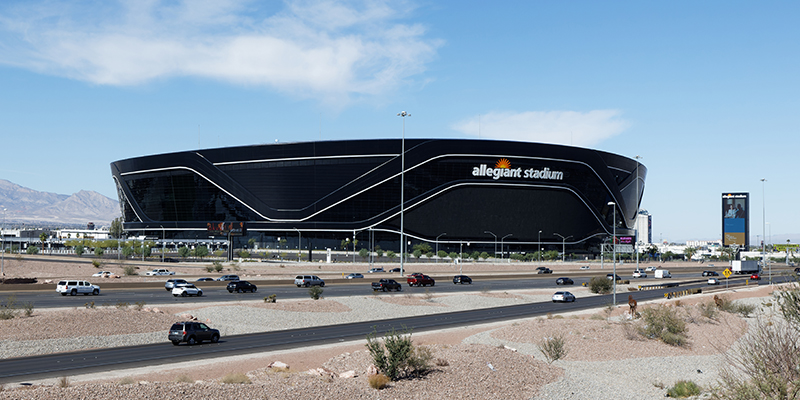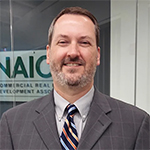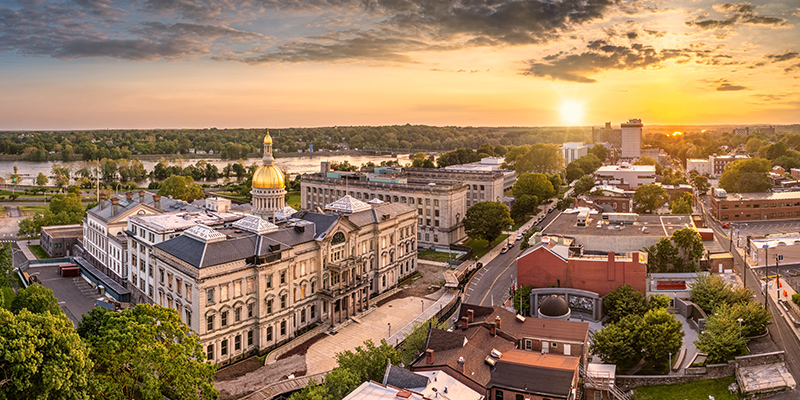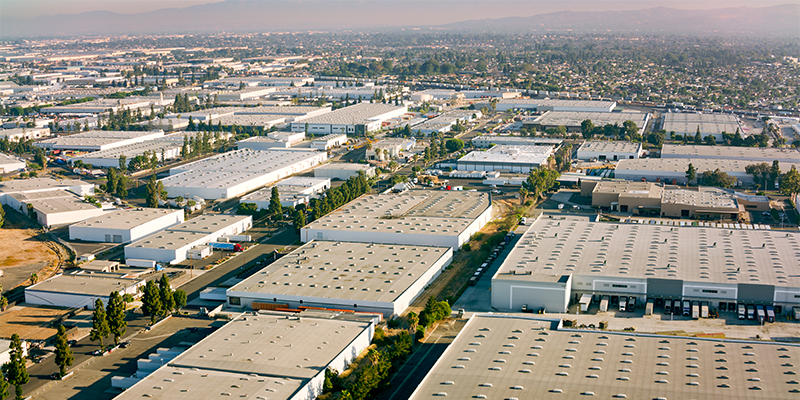During a CRE Talk at NAIOP’s CRE.Converge this week in Las Vegas, local experts discussed how the surge of sports and entertainment has affected the Las Vegas commercial real estate market and what others can learn in terms of attracting similar businesses, financing these projects and redeveloping the areas surrounding them. Here are major takeaways from the talk featuring Steve Hill, CEO and president, Las Vegas Convention and Visitors Authority, and Angela Otto, partner, Brownstein Hyatt Farber Schreck, LLP.
Las Vegas wasn’t a major-league sports city until a few years ago. Two things changed that.
First, the area experienced explosive population growth, becoming one of the fastest-growing markets in the U.S. Second, concerns that gaming and gambling on sports would hurt the integrity of the leagues and teams have largely dissipated. Thanks to the rise of fantasy football (and other fantasy sports) and the popularity of people being able to make prop bets from home on their phones, the leagues now largely view gaming as a positive because it adds interest to their events. Las Vegas had argued for decades that regulated, transparent gaming was much better than the alternative.
Allegiant Stadium, home of the NFL’s Las Vegas Raiders, was a game-changer for the city.
Since the stadium’s opening four years ago, Las Vegas has become the only city to have hosted all three of the NFL’s marquee events: the Super Bowl, the NFL Draft and the Pro Bowl (twice).
The number of people drawn to Las Vegas by its sporting events, music festivals and entertainment venues is inspiring new conversations and developments related to infrastructure and transportation.
Brightline is in the process of developing a high-speed rail system that will make the connection between Las Vegas and Southern California in approximately two hours. And the Boring Company has built a tunnel system underneath the Las Vegas Convention Center that allows for the rapid transport of passengers in Teslas. Sixty-eight miles of tunnels have been permitted for land use, and when the express system is built out over the next 10 years, it will connect the entire city – and likely become a top Las Vegas attraction on its own. (For more on the Brightline and Boring Company projects, read “Betting Big on Transportation and Tourism.”)
Rather than acting as a central planning organization, the Las Vegas Convention and Visitors Authority (LVCVA) sees its role as facilitating the implementation of innovative ideas.
The government entity discourages projects that don’t make sense for the city, but LVCVA CEO and President Steve Hill said, “What has made Las Vegas what it is, is a willingness to start with ‘yes’ and try to keep it at ‘yes’ instead of starting with ‘no’ and then you have to overcome that. That’s really what a lot of our job is –making [Las Vegas] the best platform in the world for people with great ideas.” That approach led to both Allegiant Stadium and the upcoming relocation of Major League Baseball’s Oakland Athletics to Las Vegas, where the team will play in a newly built stadium along the Las Vegas Strip.
Las Vegas plans to keep pushing forward as a sports and entertainment capital.
In addition to a Major League Baseball team, over the next 4-5 years, Las Vegas expects to add an NBA franchise, host a College Football Playoff National Championship game, and bring back the Super Bowl. It is already home to an NFL team (the Raiders), a National Hockey League franchise (the Golden Knights) and a WNBA team (the Aces) and hosts an annual Formula 1 event (the Las Vegas Grand Prix). In April, Las Vegas will host WrestleMania at Allegiant Stadium.
This post is brought to you by JLL, the social media and conference blog sponsor of NAIOP’s CRE.Converge 2024. Learn more about JLL at www.us.jll.com or www.jll.ca.









